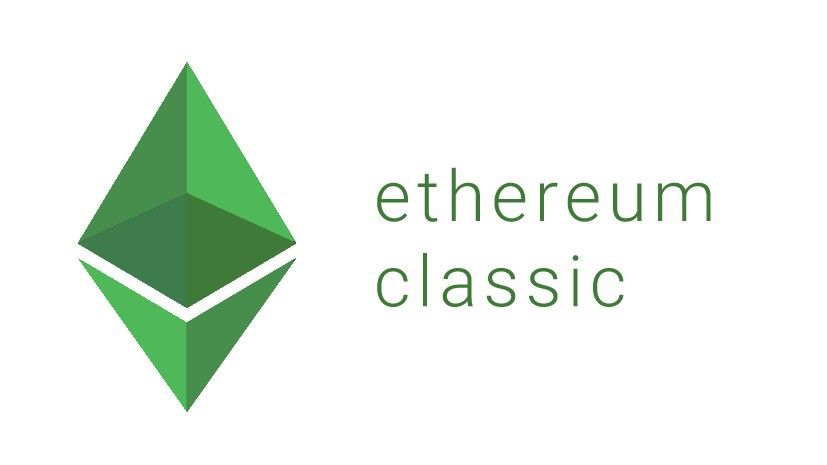What Is Ethereum Staking, And How Does It Impact Users Of Ethereum?
One of the most notable terms added to any blockchain vocabulary available today is Ethereum. With its programmable smart contract features, it demonstrated to the world the full potential of blockchain technology. You must be aware of Ethereum staking if you’ve been keeping up with recent Ethereum headlines.
“The Merge,” a multi-stage update for enhancing the security and scalability of the Ethereum network, is one of the most striking features of Ethereum. The revolutionary upgrade to Ethereum also signals its switch from the current Proof of Work consensus method to a Proof of Stake consensus architecture. The post that follows explains how Ethereum staking is made possible by the new consensus method. Additionally, you can discover the fundamentals of ETH staking and its advantages. The article also addresses ways of staking Ethereum and provides solutions to some frequently asked questions regarding it.
Proof of Stake Replaces Proof of Work in the Transition
Similar to the well-known Bitcoin blockchain, the original Ethereum network also used the Proof of Work consensus protocol at its foundation. Proof of Work improved the security of the Ethereum network, but at a high cost to scalability. The maximum transaction rate for Ethereum 1.0 was 15 per second.
When compared to current instruments, the transaction speed of Ethereum is incredibly negligible when used for processing financial applications. Visa, for instance, can handle about 1700 transactions per second, while MasterCard can handle 5000 transactions per second.
The discussion of Proof of Stake and the lookup for an Ethereum staking calculator are related topics. With a processing speed of 100,000 transactions per second, Proof of Stake might vastly improve scalability. It might thus provide opportunities for new initiatives and applications on the Ethereum network. Proof of Stake might also guarantee that the Ethereum blockchain’s energy efficiency is increased. The Ethereum Foundation blog says the latest upgrade would be almost 99.9% cut energy use.
Here’s The Differences Between #Cardano POS Staking Mechanism And #Ethereum ‘s ‘Proof Of Locked Ether’ POS Staking Mechanism…
What Is Your Take On This #Eth #Ethereum Investors? pic.twitter.com/5BgVb3oWAd
— $ducadachris 🏁🇬🇧 (@ChrisFryers67) November 15, 2022
What is staking in Ethereum?
The fundamentals of an ETH staking guide illustrate how staking Ethereum is a necessary component of the new ETH 2.0. Staking would be a crucial component of the Ethereum ecosystem with the PoS consensus process. Any user with ETH might participate in the staking process and contribute to network security while also benefiting from the desired incentives.
Staking is the procedure of donating 32 ETH to the Ethereum blockchain in order to activate validator software. You would be in charge of block adding, transaction processing, and data storage after activating the validator node. Because of this, Ethereum can continue to be secure while still giving rewards to validators in the form of new ETH.
Also, read – Four Errors About The Ethereum Merge Exposed
Motives for Ethereum Staking
The answer to “how Ethereum staking functions for consumers” would be rather difficult without any fundamental direction. In order to determine whether Ethereum has any value or not, you need to investigate the motivations for staking it. An overview of the key advantages of ETH staking is provided below.
Opportunities for Rewards
The promise of rewards is one of the first things to demonstrate the significance of your stake in ETH2. Participants that work with good intentions to aid the network in reaching an agreement will receive rewards under ETH 2.0. Users might earn prizes by using software that could group several transactions into new blocks. Additionally, ETH2 provides rewards for confirming the contributions of other validators, aiding in the maintenance of the chain’s security.
Enhancing Sustainability
Sustainability is an advantage of Ethereum’s transition to Proof of Stake. Staking cryptocurrency not only generally benefits participants by eliminating entry barriers but also makes Ethereum more ecologically friendly. You wouldn’t employ powerful computers that consume enormous amounts of electricity. On the other hand, using a smartphone or a personal computer at home may be sufficient to use a Proof of Stake blockchain.
Improved Security
The Ethereum network would grow more robust and resistant to security intrusions. How? Hackers would require more ETH to control the majority if you staked more in the network. Any person would need to have control over the majority of the ETH.
Working Principles of Ethereum Staking
The question of “Is staking ETH profitable?” and other similar concerns would be the next significant point in an introduction to ETH staking. Interestingly, the description of several ETH stake procedures has a reliable response. You can stake Ethereum using one of the following strategies.
Solo staking
Solo staking, frequently regarded as a benchmark for staking applications, is the earliest and most popular staking strategy on Ethereum. Solo home staking could ensure high participation benefits while enhancing the network’s decentralization. The fact that your data and assets are not held in centralized custody is the most crucial aspect of all. However, in order to stake ETH2 via the solo staking method, you must adhere to two crucial requirements. In order to begin with, solo staking requires at least 32 ETH.
In addition, you must make sure that your computer is always connected to the internet and is only used for staking. You also need to be technically knowledgeable about blockchain mechanics and staking. Users can rely on user-friendly tools to make the procedure simpler at the same time.
Serving as a Stakeholder
You may be able to relieve yourself of your hardware management concerns by using staking as a service. For some users, keeping a computer running continuously and maintaining an internet connection can be challenging. In these situations, you might consider the optimal strategy for utilizing your 32 ETH in an ETH staking guide.
By becoming a Staking as a Service provider, participants might keep receiving native block incentives. The workflow for these services includes regular stages like creating validator credentials and adding user signing keys to the credentials.
Users then need to deposit 32 ETH into the platform, giving the service authorization to verify as their representative. However, having faith in the service provider is the most important prerequisite for choosing staking as a service strategy. The user retains control of the keys for withdrawing ETH, lowering counterparty risks.
Preferred Staking
Pooled staking is another noteworthy response to the question, “How does Ethereum staking function in different ways?” Users could profit from a variety of pooling options without having to stake 32 ETH. Users that are not interested in staking all 32 ETH should use pooled staking.
Liquid staking is a feature of the majority of pooled staking solutions, and it entails the use of an ERC-20 liquidity token to symbolize the staked Ethereum. The simplicity of shifting out your staked assets at any moment is the main advantage of liquid staking. Pooled staking does not naturally relate to Ethereum. It is vital to remember this. Currently, third-party firms are providing pooled staking options, each with a unique set of hazards.
Centralized Trading
You can rely on staking through centralized exchanges to discover a precise Ethereum staking calculator. Most centralized exchanges offer staking services for consumers who cannot manage their ETH in their own wallets. For those new to staking, centralized exchanges are the best option because they enable them to make respectable yields on their ETH stake with no effort and supervision. On the other side, it’s also critical to be aware of the compromises centralized exchanges entail.
The main drawback of centralized exchanges is quite clear, given their “centralized” nature. Consequently, a third party could exercise custody or control over your data. Consider a centralized exchange that is permanently down. You will inevitably lose whatever you gained from the transaction.
Additionally, large ETH pools are amassed by centralized exchanges for the use of a vast network of validators. A single point of failure might have catastrophic effects on the security of your staked ETH because the pool itself could be a huge target for attackers.
Stay informed with daily updates from Blockchain Magazine on Google News. Click here to follow us and mark as favorite: [Blockchain Magazine on Google News].
Get Blockchain Insights In Inbox
Stay ahead of the curve with expert analysis and market updates.
latest from tech
Disclaimer: Any post shared by a third-party agency are sponsored and Blockchain Magazine has no views on any such posts. The views and opinions expressed in this post are those of the clients and do not necessarily reflect the official policy or position of Blockchain Magazine. The information provided in this post is for informational purposes only and should not be considered as financial, investment, or professional advice. Blockchain Magazine does not endorse or promote any specific products, services, or companies mentioned in this posts. Readers are encouraged to conduct their own research and consult with a qualified professional before making any financial decisions. The featured image used is just a creative depiction of the title and it does not intend to hurt sentiments of any person or institution. If it hurts anyone sentiments, please do not hesitate to reach out to Blockchain Magazine.

 Bitcoin
Bitcoin  Ethereum
Ethereum  XRP
XRP  Tether
Tether  Solana
Solana  Dogecoin
Dogecoin  USDC
USDC  Cardano
Cardano  Lido Staked Ether
Lido Staked Ether  TRON
TRON  Chainlink
Chainlink  Avalanche
Avalanche  Wrapped stETH
Wrapped stETH  Stellar
Stellar  Wrapped Bitcoin
Wrapped Bitcoin  Sui
Sui  Hedera
Hedera  Toncoin
Toncoin  Shiba Inu
Shiba Inu  WETH
WETH  Polkadot
Polkadot  Parkcoin
Parkcoin  LEO Token
LEO Token  Litecoin
Litecoin  Bitget Token
Bitget Token  Bitcoin Cash
Bitcoin Cash  Uniswap
Uniswap  Official Trump
Official Trump  Hyperliquid
Hyperliquid  Wrapped eETH
Wrapped eETH  Pepe
Pepe  USDS
USDS  NEAR Protocol
NEAR Protocol  Ethena USDe
Ethena USDe  Aave
Aave  Aptos
Aptos  Internet Computer
Internet Computer  Ondo
Ondo  WhiteBIT Coin
WhiteBIT Coin  Ethereum Classic
Ethereum Classic  POL (ex-MATIC)
POL (ex-MATIC)  Monero
Monero  Algorand
Algorand  Cronos
Cronos  OKB
OKB  Mantle
Mantle  Dai
Dai  Render
Render 




